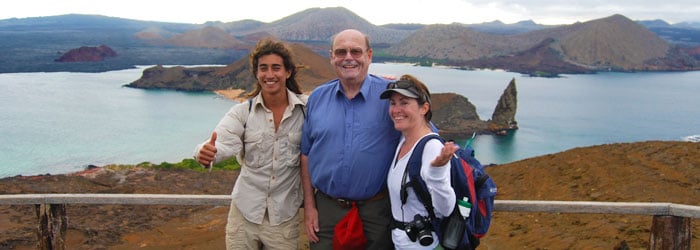Duo dynamics: Ensuring a successful partnership between leader and guide
For group planners, the relationship between your in-field trip leader and local guide is a major factor in a trip’s success. This dynamic not only affects the logistical unfolding of the itinerary, it also has a huge impact on the intangible “tone” of a trip – and how your participants will ultimately evaluate their experience in post-trip feedback.
Here are 8 strategies to ensure success between your group’s leader and the local guide:
1. Learn the roles
The trip leader typically represents an organization or institute. They impart specialty knowledge about the program’s theme, through lectures or informal discussions. They are also mindful of group mentality as well as etiquette.
By contrast, the in-country guide takes care of logistical issues. Trained in first aid and emergency procedures, they also handle health concerns, including incident reports. They can serve as a valuable resource, providing insight on local topics – culture, nature, history, social issues, etc.
It’s important for the trip leader to let the local guide know that they are working together as partners, not superior and subordinate.
2. Get on the same page in advance
Before the trip departs, arrange a meeting with the trip leader and local guide. This is a valuable opportunity for the group planner, the trip leader, and the local guide to get on the same page: voice any concerns, ask questions about preparedness and logistics, and communicate expectations.
3. Check-ins are vital
With open lines of communication established pre-trip, the group leader and local guide will be prepped to check in frequently throughout the program. These can be used to confirm schedule details and convey any requests from the group.
4.Communicating in translation
English may be a second language for your local guide, so avoid awkward assumption and double-check comprehension. This goes for both parties – the trip leader should also confirm they understand information clearly. As with all communication, there’s sometimes a difference between what is said and what is meant. In some cultures, “yes” and “no” are not always black and white, and “no” is sometimes considered rude. The trip leader should be prepared to discern whether yes is a guarantee, a possibility, or simply a polite response.
5. Itinerary takes priority
Local guides know their country and the trip itinerary. They know which activities can and can’t be changed or added, and the degree of difficulty of a given excursion. Adhere to the planned itinerary as much as possible. Even a minor change may throw off the rest of the day.
6. Level heads prevail
In a frustrating situation, an angry reaction is likely to be ineffective, or even counterproductive. The trip leader loses face and may severely embarrass not only the local guide, but the participants traveling. Diplomacy goes a long way. Instead of anger, better strategies include a smile and the good faith that the local guide is doing everything they can to meet your group’s goal.
7. Double-teaming needy participants
If a participant is difficult or has special needs, the trip leader and country guide work together to accommodate them without unduly limiting the rest of the group. On occasion it may be necessary to gently discourage someone from participating if it might endanger them or disrupt the group. Trip leaders, use your best judgment. (For tips on how to handle difficult participants, check out our post here.)
8.Cultural awareness is key
Even though the working relationship between trip leader and local guide is ultimately a professional connection, it extends into a social dynamic as well. Cultural differences can show up in balancing the professional and social elements of interactions. Americans tend toward a direct, taking-care-of-business approach, whereas other cultures might be offended by this attitude. Trip leaders should be friendly, flexible, and sociable when working with local guides.
But even though there are common pitfalls and challenges, more often than not, leaders and guides end up forging lifelong friendships, and stay in touch well after the trip has ended.
For more information about Holbrook’s top-notch local guides, check out this post.



